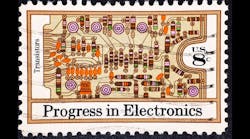A government’s prime responsibility is to protect and defend its citizens. Civil protection is performed by organizations like the police, fire, and ambulance services, while the armed forces defends against military interventions. Secure, reliable, and robust wireless communications form vital aspects of each service.
Historically, the systems have migrated from analog to narrowband digital transmissions that support voice and some restricted data capabilities. The network of each service would typically have been conceived as standalone and usually unable to interoperate with any other system. Therefore, the task of coordinating—for example, police and fire services at an emergency—is fraught with difficulties.
Regrettably, it takes major incidences such as 9/11 in America, or the Sewol ferry capsizing off the Korean coast, to focus attention on the problems. Following these and other tragedies, the governments of the U.S., South Korea, and U.K. each decided that better integration between the different branches of emergency responders was an important issue to address. As such, these governments have already legislated to update their emergency service systems in light of these requirements.
The current standards of traditional land-mobile-radio (LMR) technologies such as P25 and TETRA provide voice with limited data. In contrast, commercial cellular smartphones are used by billions of people to speak, browse the internet, stream video, and view photos, demonstrating that user-friendly technology is available for much richer communications. A similar realization in the armed forces has spurred the move toward software-defined radios (SDRs) and cognitive radios.
Implementing LTE
Some countries have chosen to bite the bullet and update their systems. The plans are to base the new network for the emergency services on the LTE system, which is often called 4G. This would leverage the vast research and development work that has produced the commercial systems and bring the latest capabilities to the public-safety community. Importantly, spectrum in the U.S. has been made available in the 700-MHz band—it offers excellent propagation characteristics for penetrating buildings and providing large geographical coverage from each base station.
The 3rd Generation Partnership Project (3GPP) is a body that sets global standards for cellular telecommunications, including LTE. This specifies network technologies, including radio access, the core transport network, and service capabilities. The 3GPP requests suggestions from its members for addressing new capabilities, and then assesses and agrees on the technical details that are published as a new specification release. This gives manufacturers the confidence to build equipment with the knowledge that complying with the standards enables them to participate in a mass market and lower costs through economies of scale.








